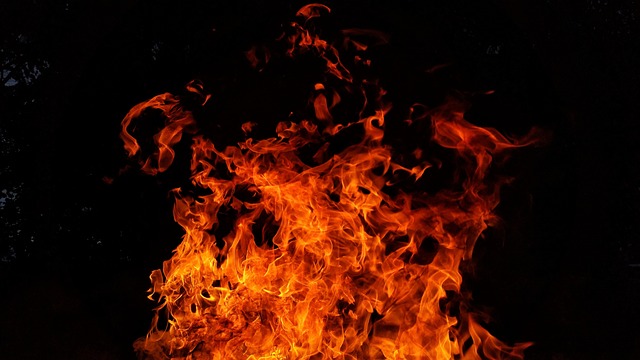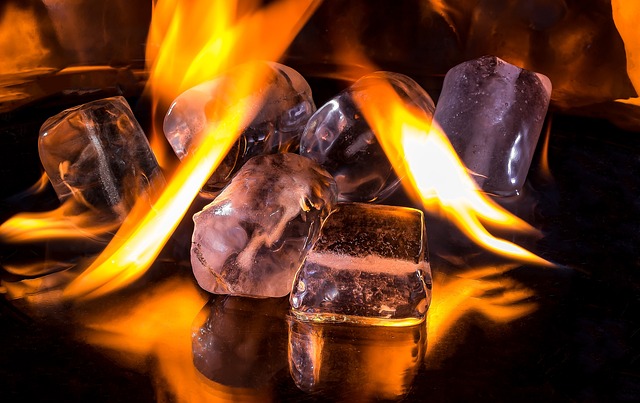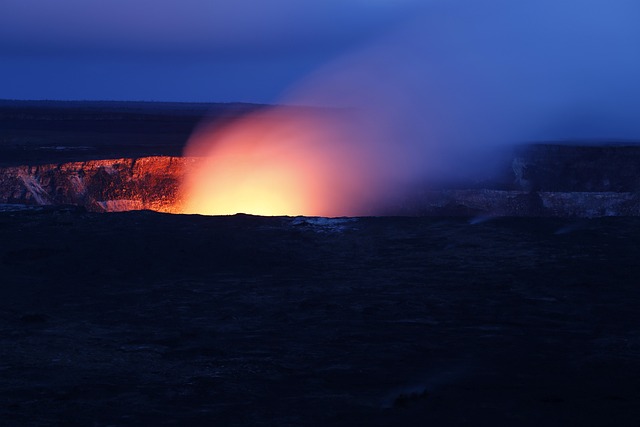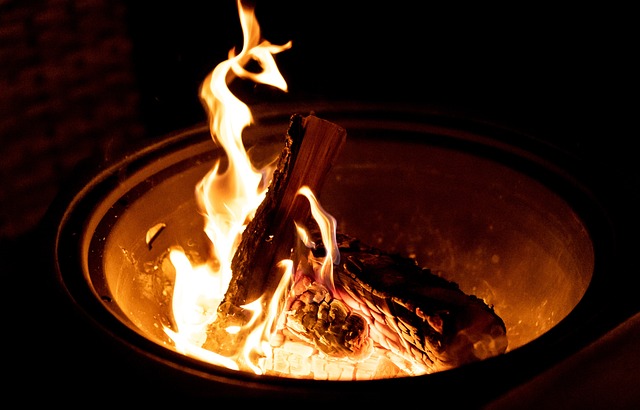When deciding between a gas or wood-burning fire pit for your backyard, consider your preference for convenience versus the charm of an authentic fire experience. Gas fire pits offer user-friendly operation with instant ignition, reliable warmth, and low maintenance, making them a clean and safe choice for cozy evenings. Wood-burning fire pits provide the rustic appeal of a traditional fireplace with the crackle and glow of a real wood fire, fostering a deeper connection with nature. Both types can serve as attractive focal points and contribute to an outdoor living space tailored to your ambiance preferences and lifestyle. Safety is paramount when integrating a fire pit; ensure you comply with local regulations and adhere to building codes. Opt for fire pits with safety features, maintain a clear and non-flammable area around the unit, and keep a multi-purpose extinguisher handy. When selecting materials, stainless steel offers durability and corrosion resistance, while natural stone like granite or limestone provides superior heat retention and an upscale look. Design your fire pit to complement your outdoor space, whether for communal gatherings or accentuating seating areas. Regular maintenance is crucial for safety and longevity; clear debris after each use, scrub the interior regularly, and check for signs of rust or damage. Proper care ensures your fire pit remains a central and enjoyable feature in your backyard, providing warmth and ambiance for many years to come.
Fire pits transform backyards into cozy outdoor sanctuaries, offering a warm glow and an inviting ambiance. This article delves into the essential considerations for installing a safe and functional fire pit in your own space. We’ll explore the differences between gas and wood-burning options to find the perfect fit for your backyard ambiance. Safety is paramount, so we’ll guide you through adhering to local regulations and standards to ensure your fire feature complies with necessary requirements. Design plays a crucial role too; discover the materials, shapes, and features that will elevate your fire pit from ordinary to extraordinary. Lastly, maintenance is key for longevity; learn how to keep your fire pit clean, efficient, and in prime condition year-round. Whether you’re looking to replace an old fireplace or add a new fire pit to your outdoor living space, this comprehensive guide will help you make informed decisions.
- Understanding Fire Pit Options: Gas vs. Wood Burning for Backyard Ambiance
- Safety First: Ensuring Your Fire Pit Meets Local Regulations and Standards
- Designing Your Dream Fire Pit: Materials, Shapes, and Features to Consider
- Maintenance Matters: Keeping Your Fire Pit Clean, Efficient, and Long-Lasting
Understanding Fire Pit Options: Gas vs. Wood Burning for Backyard Ambiance

When considering the addition of a fire feature to enhance your backyard ambiance, choosing between a gas and a wood-burning fire pit warrants careful thought. A gas fire pit offers a clean, push-button ignition for immediate enjoyment with the convenience of easy on/off operation and minimal cleanup. Its consistent flame provides a reliable source of warmth, ensuring a cozy setting without the labor-intensive preparation that accompanies wood-burning options. On the other hand, a wood-burning fire pit exudes an authentic, rustic charm that many homeowners cherish. The crackling sound and dancing flames of a real wood fire create an immersive experience reminiscent of traditional campfires, fostering a sense of connection with nature and the timeless appeal associated with fireplaces indoors. Homeowners interested in a more hands-on approach to fire pit maintenance will appreciate the authenticity of wood-burning models, which also allow for the roasting of marshmallows and sharing stories around the fire. Both gas and wood-burning fire pits serve as focal points that can transform your backyard into an outdoor living space, offering different atmospheres and experiences to suit individual preferences and lifestyles.
Safety First: Ensuring Your Fire Pit Meets Local Regulations and Standards

When integrating a fire pit into your backyard oasis, safety should be paramount. It’s crucial to adhere to local regulations and standards to ensure that your fire feature is not only enjoyable but also compliant with safety norms. Many municipalities have specific bylaws regarding the installation and use of outdoor fire pits. These may include setback distances from structures, height restrictions, and fuel type limitations. Before purchasing or constructing a fire pit, it’s essential to consult your local building codes to guarantee compliance. Opt for fire pits with safety features such as protective screens to prevent sparks and embers from escaping, and consider models that come with a water reservoir or a spark screen for added protection. Additionally, always keep a multi-purpose extinguisher within reach when the fire is lit, and never leave it unattended.
Choosing the right type of fire pit for your backyard goes beyond aesthetics; it’s about selecting a design that aligns with safety standards and functional requirements. Whether you prefer the ambiance of a traditional wood-burning fire pit or the convenience of a gas-powered one, ensure that your choice aligns with local regulations. Gas fire pits, for instance, offer a controlled flame and are often easier to regulate, reducing the risk of unintended flare-ups. Portable options provide flexibility in placement while still offering safety features like automatic shut-off valves. When installing any fire pit, ensure it’s placed on a stable, non-flammable surface, away from overhanging branches and combustible materials. This proactive approach to safety will allow you to enjoy the warmth and ambiance of your fire pit with peace of mind.
Designing Your Dream Fire Pit: Materials, Shapes, and Features to Consider

When designing your dream fire pit for your backyard, selecting the right materials is paramount. Stainless steel is a popular choice due to its durability and resistance to rust and corrosion, ensuring longevity and safety. Natural stone such as granite or limestone not only offers an elegant aesthetic but also provides superior heat retention, creating a cozy ambiance. Consider the shape that best complements your outdoor space; circular models foster a communal gathering atmosphere, while rectangular or square designs can serve as a focal point alongside a seating arrangement.
Incorporating features that align with your lifestyle will enhance both the functionality and enjoyment of your fire pit. A built-in fireplace can offer a more integrated solution, blending seamlessly with your outdoor decor. Features like adjustable flames, hidden storage for wood or seating accessories, and wind guards are essential for optimizing the fire pit experience, especially in varying weather conditions. Additionally, selecting a gas or wood-burning option depends on personal preference, with gas fire pits offering convenience and easy maintenance, while wood-burning models provide the authentic campfire experience. Always prioritize safety features such as a protective screen and ample clearance from combustible elements to ensure a secure environment for family and friends.
Maintenance Matters: Keeping Your Fire Pit Clean, Efficient, and Long-Lasting

When integrating a fire pit into your backyard oasis, regular maintenance is paramount to ensure both safety and longevity. A clean fire pit not only enhances the ambiance but also guarantees optimal performance and a longer service life. To maintain your fire pit’s efficiency, start by removing any debris or ash from previous fires promptly after use. This prevents the buildup of combustible materials that could potentially lead to unsafe conditions. Additionally, using a stiff-bristled brush to scrub the interior with a fire pit cleaner will remove soot and creosote, which can cause smoke issues and reduce heat output over time. For gas fire pits, regular checks and maintenance of gas lines and valves are crucial to prevent leaks and ensure consistent operation. By investing a modest amount of time in routine upkeep, your fire pit becomes a dependable focal point that provides warmth, light, and joy for many gatherings to come.
The materials from which your fire pit is constructed will dictate the specifics of its maintenance regimen. Stone, concrete, and metal pits each have unique care requirements. For instance, stone and concrete surfaces may require sealing to protect against weather damage, while metal components, particularly those in a gas fire pit, should be inspected for rust or corrosion regularly. A well-maintained fire pit is a testament to responsible ownership and enhances the overall safety and enjoyment of your outdoor living space. By adhering to these maintenance practices, you can expect your fire pit to provide comfort and pleasure for years to come, serving as a central gathering spot for friends and family alike.
When considering the addition of a fire pit to your backyard, it’s crucial to weigh the options between gas and wood-burning models to find the perfect balance of ambiance and functionality for your outdoor space. Ensuring compliance with local regulations and adhering to safety standards is paramount. This includes selecting materials, shaping, and features that not only complement your backyard’s design but also enhance its usability throughout the seasons. Regular maintenance is key to preserving the longevity and efficiency of your fire pit, ensuring it remains a focal point and a source of warmth for years to come. By thoughtfully integrating a fire pit into your backyard landscape, you can create an inviting and safe atmosphere that family and friends will enjoy, turning ordinary evenings into extraordinary experiences centered around the comforting glow of a well-designed fire feature.
